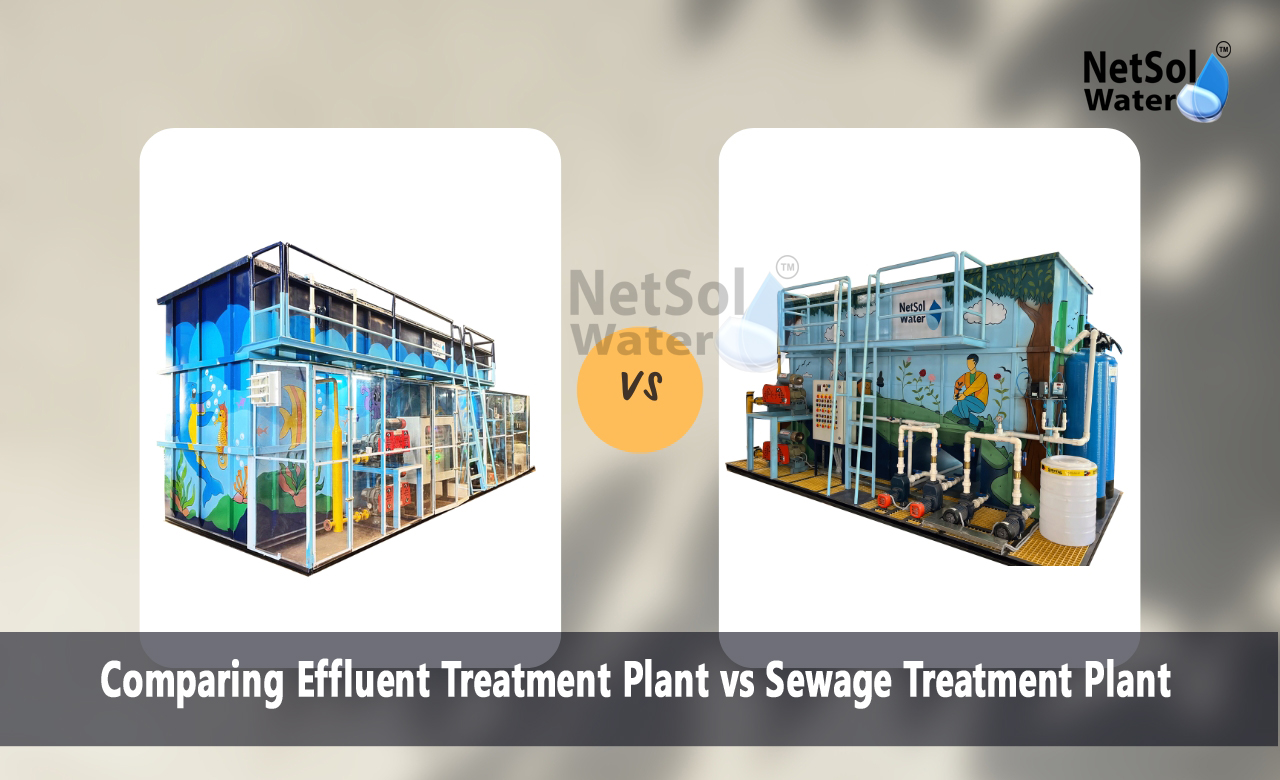Comparing ETP vs STP
Water treatment solutions shape the future of industrial operations. Every industry needs to select between Effluent Treatment Plants (ETP) and Sewage Treatment Plants (STP) to manage their wastewater effectively. This decision affects both business operations and environmental protection. ETPs specialize in treating industrial wastewater that contains chemicals and manufacturing byproducts. STPs process domestic sewage filled with organic waste from residential and commercial buildings. The growing focus on environmental standards pushes industries to evaluate their treatment options carefully. Each system offers unique advantages based on the type of waste they handle. Companies must consider factors like waste composition treatment efficiency and operating costs when choosing between ETP and STP systems.
We will explain the key differences between these treatment solutions to help you make an informed choice for your industrial facility.
Waste Characteristics and Treatment Requirements
The nature of wastewater determines which treatment system works best for your industry. Each type of waste needs specific treatment methods to meet environmental standards. Let us explore the characteristics of different waste types and their treatment needs.
Industrial Wastewater Composition: Industrial processes create wastewater with varying chemical compositions. Manufacturing units produce effluents containing heavy metals and chemical compounds. Food processing industries generate waste with high organic content and cleaning agents. Textile manufacturers deal with wastewater containing dyes and bleaching agents. The waste composition changes based on production cycles and raw materials used.
Domestic Sewage Properties: Domestic sewage shows consistent patterns in its composition. This wastewater contains organic matter from human activities. Food waste adds to the organic load in sewage systems. Cleaning products influence the chemical properties of domestic waste. The waste flow remains steady throughout the day with peak periods.
Treatment Objectives: Environmental regulations set specific targets for treated water quality. Industries must remove harmful substances before discharge. The treated water should meet safe disposal standards. Some industries aim to reuse treated water in their processes. Each treatment objective needs different technical approaches.
Comparing Treatment Technologies
Treatment technology selection impacts the success of wastewater management. Modern systems use various methods to clean water effectively. Let us examine the technologies used in ETP and STP systems.
ETP Treatment Methods: ETPs employ physical and chemical processes to treat industrial waste. Primary treatment removes suspended solids through settlement tanks. Chemical treatment neutralizes harmful substances in the water. Advanced oxidation breaks down complex organic compounds. Membrane filtration ensures final water quality meets standards.
STP Biological Processes: STPs focus on biological treatment methods for organic waste. Aerobic bacteria break down organic matter in aeration tanks. Anaerobic digestion handles concentrated organic waste. Nutrient removal prevents water pollution in natural bodies. The biological processes adapt to changing waste loads.
Technology Integration: Modern treatment plants combine different technologies for better results. Automated control systems monitor treatment processes continuously. Online sensors measure water quality parameters. Data analytics helps optimize treatment efficiency. Integration improves overall system performance.
Operational Considerations and Cost Analysis
The success of a treatment plant depends on proper operation and maintenance. Financial planning plays a key role in system sustainability. Let us look at the operational aspects and costs of both systems.
Operation Requirements: ETPs need skilled operators to manage chemical processes. Regular monitoring ensures proper treatment efficiency. Operators must adjust settings based on waste characteristics. Safety protocols protect workers from chemical exposure. Emergency response plans address equipment failures.
Maintenance Needs: STP maintenance focuses on biological system health. Regular cleaning prevents equipment blockages. Bacterial culture management ensures treatment efficiency. Sludge removal maintains system performance. Preventive maintenance reduces breakdown risks.
Cost Components: Initial setup costs include equipment and installation expenses. Operating costs cover chemicals and power consumption. Maintenance expenses include spare parts and labour charges. Upgrade costs and keep systems current with new standards. Staff training adds to operational expenses.
Return on Investment: Water reuse opportunities offset treatment costs. Proper maintenance extends equipment life. Efficient operations reduce power consumption. Compliance prevents penalty payments. Environmental benefits add value to business operations.
Take Action for Better Wastewater Treatment:
Choose the right wastewater treatment solution for your industry today. Our experts will help you evaluate whether an ETP or STP system suits your needs best. We analyze your wastewater characteristics and recommend the most effective treatment solution. Contact us now to schedule a detailed assessment of your industrial wastewater treatment requirements.
Contact Netsol Water at:
Phone: +91-965-060-8473, Email: enquiry@netsolwater.com



